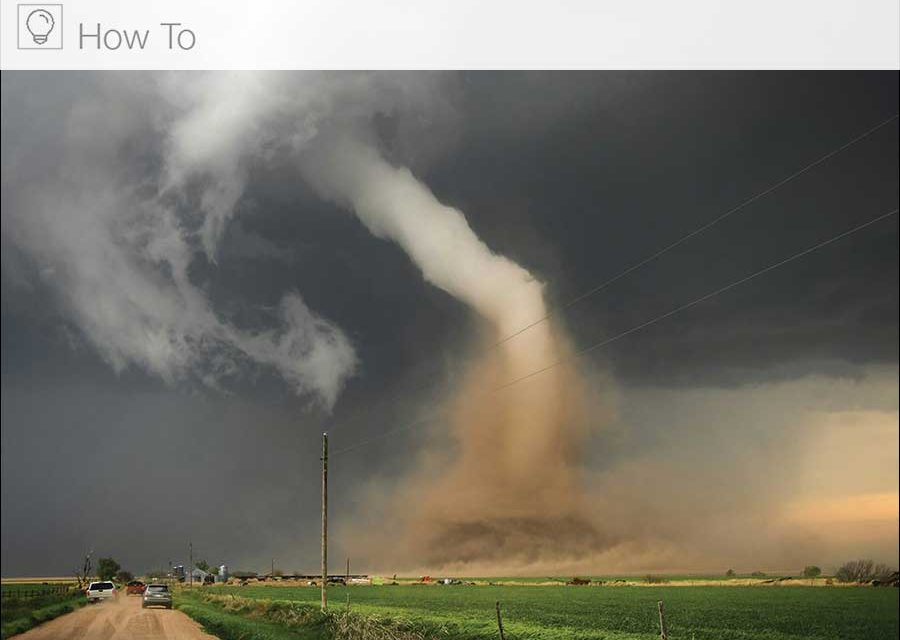By Tom Patton
At a time when many areas of the country are experiencing extreme weather events resulting in destruction of homes, extensive damage, and loss of life, there needs to be a mindset change in design and construction for the safety of the building and its occupants. Naturally, the best solution is something that has been promoted for more than 25 years — moving away from stick framing to insulated concrete forms (ICF). Going back to the parable of the big bad wolf and the three little pigs, when you huff, puff, and blow your house down, the strongest house in modern times is ICF.
A proper tornado-resistant design protects a home’s integrity and its occupants. The design must consider the strength of the entire house, walls, roof, and windows, in addition to providing a continuous load path, and be impact resistant from flying debris. Having a home built with ICF walls solves that. When the severe winds of a tornado try to rip a house apart, a continuous load path is the best defense towards holding the home together. The continuous load path ensures that when a load, including uplift and lateral (horizontal) loads, attacks a home, the load will travel from the roof, wall, and other elements toward the foundation and into the ground.
Homes built with insulated concrete forms maintain their resiliency during the high winds of a tornado. ICF structures can withstand winds of more than 200 mph. In fact, a study published by the Portland Cement Association (PCA; https://www.cement.org/cement-concrete/paving/buildings-structures/concrete-homes/technology-briefs/concrete-homes-structural-load-resistance-icfs-vs-steel-wood-frame) found that concrete walls have more structural capacity and stiffness to withstand the in-plane shear forces of high winds than wood or steel framed walls. ICFs encompass the structural features and create the load path without additional enhancements, utilizing a single building product, to create thermally insulated reinforced concrete wall sections. ICFs resist projectile debris traveling more than 100 mph. Some ICFs are compliant to FEMA P361 and ICC 500 standards for safety shelters and buildings within high-wind zones. Roof systems are anchored with embedments into the reinforced concrete walls. Windows are anchored to bucks which are embedded in concrete. Floor systems are anchored with ledgers embedded in reinforced concrete.
Being prepared for extreme weather events, high winds, floods, or wildfires starts at the design stage and material selection with the architect, designer, or homeowner. The complications to building a tornado-proof wood-framed home involves expensive support brackets, anchors, additional materials, and labor for the installation. An ICF build exceeds all that with one simple insulated block, with either a 6-inch or 8-inch core of reinforced concrete.
FEMA still highly recommends a safe room or tornado shelter for maximum safety to a home’s occupants during a high wind or extreme weather emergency. Within an ICF home, a safe room can be easily created by making all the walls of a laundry room with ICFs and installing a concrete ceiling and hurricane-proof door, for instance. Another option is an ICF basement or a stand-alone safe room. Safe rooms can easily be constructed of ICFs from plans posted on the FEMA or ICF manufacturer’s website.
In the re-build stage for devastated areas, insurance companies are taking a hard look at insuring homes and questioning why people would re-build with wood framing. ICF contractors need to be prepared to promote re-building with ICFs as the best solution. Homeowners are doing their research and for their family’s safety are looking at ICFs. Insurers are wanting stronger, more fortified homes and are educating themselves on how best to do that, looking into ICF construction. It is a prime time for ICF contractors, dealers, and distributors to aggressively promote building homes, schools, and safe structures with insulated concrete forms.
Be prepared, as climate change is becoming a real thing and is something that must be addressed in building safe structures. ICFs are the most viable answer. As a trained certified ICF installer, formulate a business plan to meet this need head-on.

Tom Patton
Tom Patton had a 30-year architectural design background prior to joining the ICF industry in 2001 with the technical support department at ARXX. Over the last 20 years, Tom has worked with major ICF companies developing technical documentation, application details, and training programs, as well as consulting and promoting ICFs with various associations including the ICFMA, NRMCA, and codes and standards committees. Currently, Tom is Corporate Brand Ambassador for Fox Blocks and co-developer of the Fox Blocks Integrated Learning Center.








